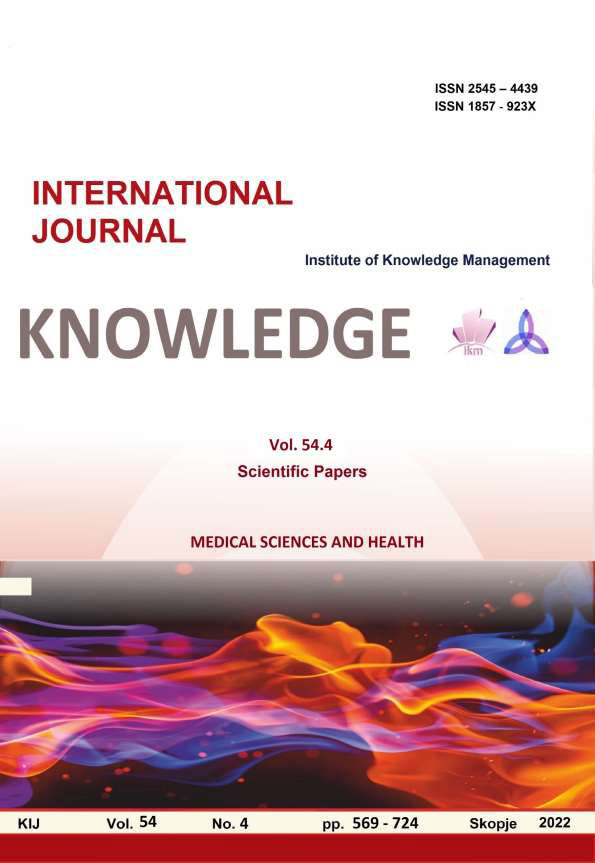CLINICAL ASPECTS OF DIFFERENT PHARMACEUTICAL FORMULATIONS OF PROPRANOLOL IN THE TREATMENT OF INFANTILE HEMANGIOMA
DOI:
https://doi.org/10.35120/kij5404683rKeywords:
infantile hemangioma, propranolol, pharmaceutical formulations, topical formulation, oral formulationAbstract
Infantile hemangiomas are one of the most common benign vascular tumors in infants and children.
Because hemangiomas can resolve spontaneously, they usually do not require specific treatment unless the
proliferation interferes with normal function or causes interference with the function of essential vital organs. There
are several types of therapy, but in recent decades the use of propranolol has become more common due to its
excellent effectiveness.
The purpose of this paper is to analyze different pharmaceutical formulations of propranolol in the treatment of
infantile hemangioma, including technological differences of the oral and topical pharmaceutical dosage forms of
propranolol. The European Medicines Agency (EMA) has approved the commercially available oral propranolol
therapy in the countries of the European Union, but this is not yet happened in our country. Recommendations to
follow and use the protocols for the oral application of propranolol in the treatment of this disease are difficult due
to the fact that this drug formulation is not registered in our country and patients are forced to obtain it from
countries where it is registered.
The use of syrup as an oral form of therapy has been clinically proven and has a high percentage of efficiency in
infantile hemangioma, but side effects such as sleep disturbance, bronchospasm, hypoglycemia, hypotension.
The goal of this publication is to propose the most appropriate topical formulation of propranolol for external use in
infantile hemangioma through a review of relevant published data on the use of various pharmaceutical formulations
of propranolol in clinical studies and documents from the European Medicines Agency,
In this paper, we used compilation and comparison methods, as most useful for a high-quality critical evaluation of
the literature regarding problematic topics, in our case the pharmaceutical formulation of propranolol, the effect of
clinical treatment and the required legislation, and which have the potential to promote clearer, shared
understandings and accelerate advances in the research.
Our results were focused on obtained and published data related to pharmaceutical-technological aspects of
production of topical formulations and the effect of clinical application, especially when it is necessary to define
exactly the amount of the released active compound from the topical form (cream, ointment or gel) and its
absorption through the skin.
Topical form of propranolol avoids the side effects of oral administrated propranolol, can help maintain a high level
of active ingredient in a local or focal region, and has an easy way of administration.
The obtained research data showed that the topical application and penetration of propranolol through the skin is
good and has a lower and controlled systemic absorption. To achieve this, the choice of the formulation and the
excipients used are particularly important. Lipophilic formulations have limited release and penetration of
propranolol. The best results are achieved by using a hydrophilic cream.
After the research done, we can conclude that the production of topical formulations containing specific active
components with a strong systemic effect, such as propranolol, can be carried out in galenic laboratories or hospital
pharmacies. For this, already existing validated equipment and excipients that are readily available can be used.
We believe that the use of topical pharmaceutical forms for local application, even in children such as the case of
propranolol in infantile hemangioma, is justified, especially to the fact that so far no side effects have been
registered even after long-term therapy.
References
Brankov, O. (2017). Infantile hemangiomas. Tukuda Hospital: Sofia.
Casiraghi, A., Musazzi, U. M., Rocco, P., Franzè, S., & Minghetti, P. (2016). Topical treatment of infantile haemangiomas: a comparative study on the selection of a semi-solid vehicle. Skin pharmacology and physiology, 29(4), 210-219.
EMA (2014, April 23). EPAR, Product Information, HEMANGIOL, Retrieved from
https://www.ema.europa.eu/en/medicines/human/EPAR/hemangiol
EMA (2014). Summary of the risk management plan, from
https://www.ema.europa.eu/en/documents/rmpsummary/hemangiol-epar-risk-management-plan-summary_en.pdf
EMA (2019). ANNEX 1,SUMMARY OF PRODUCT CHARACTERISTICS (Hemangiol, INN Propranolol) Retrieved
from https://www.ema.europa.eu/en/documents/product-information/hemangiol-epar-product-information_en.pdf
EMA decision, Opinion of the Pediatric Committee (2013, January 21 ). Retrieved from
European Medicines Agency gives second positive opinion for a paediatric-use marketing authorisation -. (2018,
September 20). European Medicines Agency. Retrieved September 15, 2022, from https://www.ema.europa.eu/en/news/european-medicines-agency-gives-second-positive-opinion-paediatric-use-marketing-authorisation
Horak, P., Klovrzova, S., Malis, J., & Sklubalova, Z. (2013). TCH-023 Liquid Oral Formulations of Propranolol Hydrochloride For the Treatment of Infantile Hemangiomas. European Journal of Hospital Pharmacy: Science and Practice, 20(Suppl 1), A77-A77.
Kashiwagura, Y., Hakamata, A., Shirai, M., Endoh, A., Tanaka, S., Inui, N., ... & Uchida, S. (2022). Topical Formulations of Propranolol for Infantile Hemangiomas: Characteristics of Formulations and Three Cases of Infants Administered Topical Propranolol Cream. Chemical and Pharmaceutical Bulletin, 70(4), 277-282.
Khattab, A.A., Gouda, H.S., & EI-Okby, Y. A. E. W. (2021). ORAL VERSUS TOPICAL PROPRANOLOL IN MANAGEMENT OF INFANTILE HEMANGIOMA. Al-Azhar Medical Journal, 50(1), 133-142.
Léauté-Labrèze, C., & Dumas, E. (2008). Propranolol for severe hemangiomas of infancy de la Roque, T. Hubiche. New England Journal of Medicine, 358, 2649.
Nagata, E., Kashiwagura, Y., Okada, E., Tanaka, S., Sano, S., Nishida, M., ... & Uchida, S. (2022). Efficacy and safety of propranolol cream in infantile hemangioma: A prospective pilot study. Journal of Pharmacological Sciences, 149(2), 60-65.
Padula, C., Nicoli, S., Pescina, S., & Santi, P. (2018). The influence of formulation and excipients on propranolol skin permeation and retention. BioMed Research International, 2018.
Price, A., Rai, S., Mcleod, R. W. J., Birchall, J. C., & Elhassan, H. A. (2018). Topical propranolol for infantile hemangiomas: a systematic review. Journal of the European Academy of Dermatology and Venereology, 32(12), 2083-2089.
Tan, X., Guo, S., & Wang, C. (2021). Propranolol in the Treatment of Infantile Hemangiomas. Clinical, Cosmetic and Investigational Dermatology, 14, 1155. Topical Formulations of Propranolol for Infantile Hemangiomas: Characteristics of Formulations and Three Cases of Infants Administered Topical Propranolol Cream. Chemical and Pharmaceutical Bulletin, 70(4), 277-282.
Wahab, S. M. A., Almetaher, H. A., Fayad, H., & Elhalaby, E. A. (2017). Oral versus topical propranolol for management of superficial infantile hemangiomas: a comparative study. Annals of Pediatric Surgery, 13(1), 1-7.





